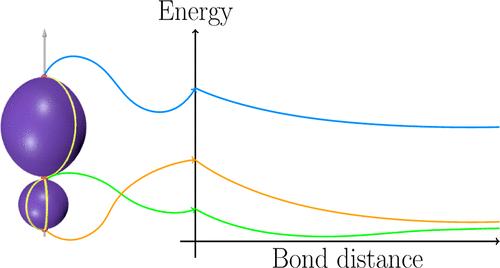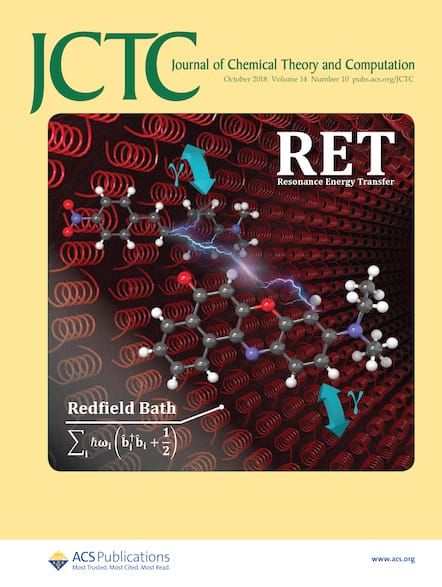通过单参耦合簇理论和代数几何探索基态和激发态
IF 5.5
1区 化学
Q2 CHEMISTRY, PHYSICAL
引用次数: 0
摘要
探索耦合簇(CC)方程的根结构对计算量子化学具有基础和实际意义。本研究从 CCD 和 CCSD 理论层面深入探讨了这些非线性方程错综复杂的根结构。我们利用代数几何的计算技术,特别是单旋转和参数同调延续方法,来计算完整的解集。我们将计算出的 CC 根与各种既定的理论上限进行比较,从而揭示这些上限的准确性和效率。在此,我们重点研究了四电子系统的解离过程,如 D2h 和 D∞h 构型的 (H2)2、在圆上对称变形的 H4 以及氢化锂。此外,我们还研究了单参比 CC 解近似激发态能量的能力。我们发现多 CC 根可以高精度地描述激发态的能量。我们的研究表明,对于氢化锂等系统,CC 不仅能高精度地逼近多个激发态的能量,还能逼近激发态本身。本文章由计算机程序翻译,如有差异,请以英文原文为准。

Exploring Ground and Excited States Via Single Reference Coupled-Cluster Theory and Algebraic Geometry
The exploration of the root structure of coupled cluster (CC) equations holds both foundational and practical significance for computational quantum chemistry. This study provides insight into the intricate root structures of these nonlinear equations at both the CCD and CCSD level of theory. We utilize computational techniques from algebraic geometry, specifically the monodromy and parametric homotopy continuation methods, to calculate the full solution set. We compare the computed CC roots against various established theoretical upper bounds, shedding light on the accuracy and efficiency of these bounds. We hereby focus on the dissociation processes of four-electron systems such as (H2)2 in both D2h and D∞h configurations, H4 symmetrically distorted on a circle, and lithium hydride. We moreover investigate the ability of single-reference CC solutions to approximate excited state energies. We find that multiple CC roots describe energies of excited states with high accuracy. Our investigations reveal that for systems like lithium hydride, CC not only provides high-accuracy approximations to several excited state energies but also to the states themselves.
求助全文
通过发布文献求助,成功后即可免费获取论文全文。
去求助
来源期刊

Journal of Chemical Theory and Computation
化学-物理:原子、分子和化学物理
CiteScore
9.90
自引率
16.40%
发文量
568
审稿时长
1 months
期刊介绍:
The Journal of Chemical Theory and Computation invites new and original contributions with the understanding that, if accepted, they will not be published elsewhere. Papers reporting new theories, methodology, and/or important applications in quantum electronic structure, molecular dynamics, and statistical mechanics are appropriate for submission to this Journal. Specific topics include advances in or applications of ab initio quantum mechanics, density functional theory, design and properties of new materials, surface science, Monte Carlo simulations, solvation models, QM/MM calculations, biomolecular structure prediction, and molecular dynamics in the broadest sense including gas-phase dynamics, ab initio dynamics, biomolecular dynamics, and protein folding. The Journal does not consider papers that are straightforward applications of known methods including DFT and molecular dynamics. The Journal favors submissions that include advances in theory or methodology with applications to compelling problems.
 求助内容:
求助内容: 应助结果提醒方式:
应助结果提醒方式:


